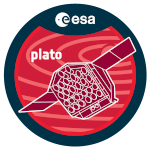In the Solar vicinity, M dwarfs dominate the stellar population and over half of them potentially host rocky planets. Stellar elemental abundances are crucial for understanding the properties of these planets, but they are yet scarce for M dwarfs due to challenges related to pervasive molecular bands that severely distort the spectral continuum in the optical wavelength range.
Here we compile the elemental abundances of a sample of up to 43 M dwarfs, which are measured in the near-infrared wavelength range where the molecular lines are greatly reduced. We investigate them in the [X/H] vs. [Fe/H] space to identify statistical trends, which can be used to estimate the abundances of major rock-forming elements (e.g. O, Mg and Si), given available [Fe/H] information.
Based on bootstrap-based linear regressions on the yet-limited sample of M dwarfs we derive M-dwarf [X/H]-[Fe/H] trends, which we compare with such trends of a population of FGK dwarfs based on the GALAH survey. We find that the [X/H]-[Fe/H] trends are not always consistent for major rock-forming elements between the two samples of stars. To account for the effect of Galactic Chemical Evolution, we also compare the trends in the [X/Fe] vs. [Fe/H] space and find similar discrepancies between cooler M dwarfs and Sun-like stars. If these discrepancies are physical it may suggest that inferring M dwarf stellar abundances based on solar or solar-type stellar abundances – a usual practice in the studies of star-planet chemical connections – may place incorrect constraints (e.g. C/O, Mg/Si, and Fe/Mg) on characterising rocky worlds around M dwarfs. While an increasing set of precise measurements of M dwarf stellar abundances are recommended, our analysis offers an intermediate step in constraining the plausible chemical compositions of M-dwarf planet hosts (given available [Fe/H]). This enables a population-level analysis of the properties of M dwarfs planets, for which mass and radius measurements are also available. In addition to increasing our knowledge of the diversity of rocky worlds around M dwarfs, such studies will pave the way towards investigating rocky worlds around brighter, Sun-like stars – a territory of research empowered by the PLATO mission.

 PDF version
PDF version
